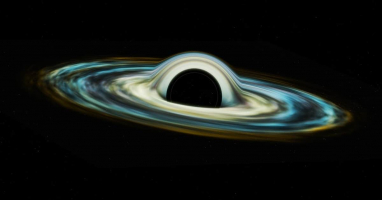I wrote this article in Japanese and translated it into English using ChatGPT. I also used ChatGPT to create the English article title. I did my best to correct any translation mistakes, but please let me know if you find any errors. By the way, I did not use ChatGPT when writing the Japanese article. The entire article was written from scratch by me, Saikawa Goto.
Introduction
Movies and books covered in this article

Three takeaways from this article
- Originally, mathematics was considered to be something discovered like an explorer.
- The discovery of “non-Euclidean geometry” had a great impact on mathematicians.
- Young genius Gödel shattered the ambition of Hilbert, who wanted to perfectly systematize mathematics.
Self-introduction article


Published Kindle books(Free on Kindle Unlimited)
“The genius Einstein: An easy-to-understand book about interesting science advances that is not too simple based on his life and discoveries: Theory of Relativity, Cosmology and Quantum Theory”
“Why is “lack of imagination” called “communication skills”?: Japanese-specific”negative” communication”
The quotes in the article were translated using ChatGPT from Japanese books, and are not direct quotes from the foreign language original books, even if they exist.
Have You Ever Thought About Whether “Mathematics” is a “Discovery” or an “Invention”?
First, Let’s Clarify What is being Asked

This book is about whether “mathematics is something that humans discovered or something that humans invented.”

Are mathematical truths independent of the human mind? In other words, are we simply discovering mathematical truths in the same way that astronomers discover unknown galaxies? Or is mathematics just a human invention?
Many people may not understand the meaning of this question, so let’s think a bit more about “discovery” and “invention” with a more specific example.

First, let’s talk about “discovery”. Whether you’re a professional or an amateur, you can observe celestial bodies with a telescope at night. And when you discover a celestial body that no one else has seen before, you can name it whatever you want.
Now, it’s unlikely that anyone would claim that they “invented” a celestial body if they found a new one. Celestial bodies are things that exist regardless of whether or not we humans observe them. It’s not like the act of looking through a telescope creates a new celestial body. So, the process of finding stars is clearly a “discovery”.

So what about language? There are many languages in the world, such as Japanese, English, and French. However, no one would claim to have “discovered” them.
For example, if we were to say that English existed before there were any people who spoke it, then it might be called a “discovery.” But that’s obviously not the case. The process of creating language is clearly an “invention.”
In this way, whether something is a “discovery” or an “invention” can be judged quite clearly based on what it is.
So, what about mathematics? That is the question of this book.

The Main Arguments of the “Discovery Group” and “Invention Group”
In the world of mathematics, there are two opposing groups: the “discovery group” and the “invention group,” which is the premise of this book. The book follows how the arguments of each faction have changed over time.
As an aside, I once had the opportunity to interview a Japanese mathematician and asked him “There are ‘discovery group’ and ‘invention group’ in mathematics, aren’t there?” The mathematician dismissed the idea, saying that at least around him, there was only the “invention group.”

However it may be related to being Japanese. Because the idea of the “discovery group” inevitably leads to “God.” This is exactly what the title of this book implies.
The rough idea of the “discovery group” is that God, as a mathematician, created mathematics and humans are “discovering” it. That’s why I think the “discovery group” is more likely to come up among Western mathematicians.
Now let’s take a quick look at what each faction is arguing.

The “discovery group” in math points out that the subject is involved in a wide range of fields. This is expressed in the book as “the bias and omnipotence of math”.

For example, in the world of finance, there is something called the “Black-Scholes equation” used to determine option prices. It is actually based on an equation describing a phenomenon called “brownian motion” in physics. This shows that completely different fields, such as finance and physics, can be described by the same idea of an equation.

When you witness such amazing applications of mathematics, you may even want to think, “God created math and built this world.”
The “discovery group” seems to believe that “mathematics” actually exists (this claim may be hard to imagine), and this stance is called “Platonism.” While we are certainly amazed by the examples of how different fields are connected by mathematics, there are also problems with the idea that “mathematics” exists.

On the other hand, the “invention group” argues that “mathematics is something humans have created.” In mathematics, the concept of “consistency” is important, and humans have simply created mathematics by establishing rules that do not contradict each other. This position is called “formalism.”
In “formalism,” they believe that it is not necessary to relate mathematics to anything that exists in contrast to “Platonism,” which says, “‘Mathematics’ is real.” It means that mathematics is just like the rules of a game, and it doesn’t matter if it corresponds to something in reality.
However, this “intervention group” argument inevitably makes it difficult to explain why mathematics can be described across different domains.
This book assumes the existence of such “conflicting thoughts” and depicts how the perception of mathematics has changed throughout the history of mathematics.

Originally, mathematics was thought of as something to be discovered. The Pythagoreans were a group of mathematicians who were pioneers in this way of thinking. Although Pythagoras is known for the Pythagorean theorem, it is considered to be the achievement of the Pythagoreans, a group studying mathematics. This school of thought believed that:
History of the “Discovery Group”: Pythagoras, Descartes, Newton
Numbers are a substance that inhabits all things from the celestial realm to human morals and are a universal principle.
This is the exact stance of the “discovery group” that believes that “numbers” exist in reality. The Pythagoreans are now seen as a “kind of religious presence” in modern times.

There is a famous story that goes like this: The “Pythagoreans” believed that “all numbers can be expressed as the ratio (fraction) of integers” (which was a kind of doctrine), and claimed that “numbers that cannot be expressed as fractions (irrational numbers) do not exist.” However, using the very “Pythagorean theorem,” one of Pythagoras’ disciples discovered an irrational number called “√2”. Pythagoras was astonished and it is said that he killed the disciple to keep this discovery secret.


Anyway, the Pythagoreans believed in “discovering” truth and theorems like explorers, and this philosophy was further developed by Plato, Archimedes, and others.
Later on, mathematics became linked to science.
Philosopher of science Alexandre Koyré (1892-1964) once pointed out that the revolution in scientific thinking brought about by Galileo can be summed up in one idea: the discovery that mathematics is the grammar of science.
Galileo thought that mathematics existed for describing science, and later Descartes introduced revolutionary ideas. He created the Cartesian coordinate system, which is always taught in math class and uses the x-axis and y-axis. This way of understanding and describing mathematics became more integrated with science, and it was further promoted by Newton.

Newton established the law of gravity with an accuracy exceeding one millionth, based on observations and experiments with around 4% variation. He was the first to integrate explanations of natural phenomena and predictions from observed results. Physics and mathematics are permanently linked, and the separation of science and philosophy became unavoidable.
Mathematics has thus established its position as a means to understand the world correctly.
Newton was strongly influenced by Descartes’ book “La Géométrie.” And in mathematics at that time, the field of “géométrie (geometry)” (like a graphic problem in arithmetic or mathematics) was considered the most useful, the law to describe the world and the eternal and immutable truth created by God.

In the field of “probability and statistics,” something that feels like “God’s truth” appears. It is called the “normal distribution.”
The “normal distribution” is a graph that looks like a temple bell (If you can’t imagine it, search for it). It is known that completely unrelated data such as “body weight,” “IQ,” “annual profit rate of stock indices,” and “average batting average in Major League Baseball” follow this “normal distribution.”
For that not only natural phenomena but also data related to human characteristics and activities are related to the “normal distribution,” they received like “God created mathematics.” At this time, it can be said that the idea that “mathematics is something to be discovered” was a common sense.

The Shock of “Non-Euclidean Geometry”
In the 19th century, a shocking fact was discovered – the discovery of “non-Euclidean geometry”. This led to the renaming of what was previously simply known as “geometry” to “Euclidean geometry”. The discovery of “non-Euclidean geometry” would ultimately shake the foundation of the argument that “God created mathematics”, but let’s look at the history of this discovery.
The field of “geometry” was created by the Greek mathematician Euclid around 300 BC. He combined “five obvious assumptions that require no proof” to derive various theorems. These five assumptions include things like “all right angles are equal” and “connecting equidistant points from a point creates a circle”, which anyone would think are obviously true.

One of the axioms in Euclid’s geometry is what later became known as the “parallel postulate.” Simply put, it states that “two parallel lines never intersect.” You might think this goes without saying.

But mathematicians were dissatisfied with the parallel postulate for centuries. Compared to the other four axioms, it required a longer explanation. To be precise, the parallel postulate can be expressed as follows.

If a line segment intersects two straight lines forming two interior angles on the same side that are less than two right angles, then the two lines, if extended indefinitely, meet on that side on which the angles sum to less than two right angles.
wikipedia
Certainly a long. And mathematicians prefer simplicity.
They thought this way: the “parallel postulate” was somewhat unnatural, so they tried to combine the other four assumptions in a clever way to exclusion the “parallel postulate” into them. However, no matter how much mathematicians struggled, they could not prove that the “parallel postulate” was unnecessary.

However, a mathematician with an entirely new way of thinking emerged later. It was the idea that “there might be geometry where the ‘parallel postulate’ doesn’t hold.” In other words, it was thought that it might be possible to create a “geometry where two parallel lines intersect.”
And unbelievably, it turned out to be possible. This means that there is geometry where the “parallel postulate” is unnecessary. Therefore, the geometry where two parallel lines intersect was named “non-Euclidean geometry” to distinguish it from the previous geometry.
This fact shocked mathematicians at the time because as previously mentioned, “geometry (Euclidean geometry) was considered the truth.” It would be unreasonable to describe something that exists in more than one kind as “truth”.

Also, to mathematicians in the “invention group” (Platonism) who believe that “mathematics” is a real thing, the existence of “non-Euclidean geometry” which seems unlikely to correspond to reality, such as “two parallel lines intersecting”, must have been unacceptable.
And as a result of the discovery of this “non-Euclidean geometry”, the idea that “mathematics is something created by humans” began to spread.
Furthermore, the “Discovery Group” was Dealt a Major Blow

On the other hand, for the “invention group” (formalism) mathematicians, the discovery of non-Euclidean geometry was not a problem. For them, what’s important is “consistency” and as long as there are no contradictions between geometries, it’s all good.
The mathematicians of formalism believe that the essence of mathematics is freedom, and they eventually try to incorporate logic into mathematics.
I learned from this book that logic was actually recently incorporated into mathematics. I felt that mathematics taught in school was clearly structured in a logical form, so I assumed that this kind of description was natural. However, in reality, logic was incorporated into mathematics in the process of consolidating mathematics born in various fields into a unified form using “very few assumptions”.


Now, during the process of incorporating logic into mathematics, the “discovery group” is going to suffer a huge blow more. This is a very complicated story, so I won’t go into too much detail, but to roughly sum it up, it goes like this:
In the Zermelo-Fraenkel axiomatic system, it was found that both the “axiom of choice” and the “continuum hypothesis” cannot be proven true or false.
So what does this mean? In the Zermelo-Fraenkel axiomatic system, the following four patterns are possible:
- Both the “axiom of choice” and the “continuum hypothesis” are accepted.
- The “axiom of choice” is accepted, but the “continuum hypothesis” is not.
- The “axiom of choice” is not accepted, but the “continuum hypothesis” is.
- Neither the “axiom of choice” nor the “continuum hypothesis” are accepted.

Just like in geometry, there are multiple options in one field. It depends on the judgment of each person at the time. This makes it even more natural to think, “Mathematics is something humans created.”
Gödel Who Shattered Hilbert’s Plan
But the story is not so simple. Next it is the “invention group” that takes a big blow.
A great mathematician of the 20th century named Hilbert came up with a plan. It was called “Hilbert’s program”, and many mathematicians were working towards its completion.

“Hilbert’s program” is a project that aimed to describe all areas of mathematics with a few assumptions and rules of inference, and demonstrate that it is consistent. Hilbert believed that mathematics is pure formalism and he wanted to prove it beyond doubt. He was probably trying to fire up the mathematicians of his time to “declare the victory of formalism”.
However, this project failed to reach completion. This is because the brilliant mathematician Gödel’s “incompleteness theorems,” which he presented at the young age of 25, put an end to his plans. Although explaining these theorems is very difficult and beyond the scope of this article, in short, it means that Gödel proved that “Hilbert’s project is absolutely impossible.”

Let’s write in a little more detail.Hilbert aimed to describe every field of mathematics with a few assumptions and rules of inference and demonstrate its consistency, but Gödel proved that “no matter how mathematics is described, its internal logic cannot demonstrate the consistency of the mathematical system.”

The “incompleteness theorems” crushed Hilbert’s ambitions, but it didn’t completely negate the idea that “mathematics is a human creation.” Those who believe in “formalism” thought that if humans created math, it could be described perfectly from a formalistic perspective, but it was proven to be impossible.
Regardless, Gödel showed that “even from a formalistic perspective, math is just an incomplete game,” and it was not a victory for “formalism.”
For now, the discussion seems to have stalled here. If new developments arise in math in the future, the arguments of the “discovery group” and “invention group” may change.

In this way, it would be interesting to consider whether “God or humans created math” as a perspective on the study of mathematics.
An Example that Shows the “Ubiquity and Omnipotence of Mathematics”
The debate between discovery and invention is over, but this book introduces “knot theory.” It is an example of mathematics connecting with unexpected areas. Let’s briefly touch on it in this article.

Originally, “knot theory” was created to explain the atomic model, but it was soon found to be incorrect and discarded as an atomic model.
However, “knot theory” turned out to be quite interesting mathematically, and this theory, conceived by physicists, was developed by mathematicians as a pure research subject. The mathematicians were naturally interested in it and continued to research it out of curiosity rather than thinking it would be useful for something. However, at some point, it was discovered that this “knot theory” is related to DNA, which is the cornerstone of life. That alone is quite interesting.

But that’s not all. In science today, they’re eagerly awaiting a new theory of gravity that combines “General relativity” and “quantum mechanics”, and it turns out that the thinking behind “knot theory” is important in one of the candidates, which is called “string theory”.
Originally born in the field of physics, despite quickly being found to be wrong, it continued to be studied out of pure mathematical interest, and it’s amazing that it became relevant in another field. This book raises the question of why this kind of thing happens. Is mathematics really created by God?
In any case, this is a work that strongly conveys the depth of mathematics.

Conclusion

Personally, I think it would be exciting if it were a “discovery”. That’s because it’s more romantic than thinking “humans made it.” I don’t believe in “God” or a “Creator” or anything, but it would be nice if someday they showed us a handwritten note saying “Actually, I made it!”

Published Kindle books(Free on Kindle Unlimited)
“The genius Einstein: An easy-to-understand book about interesting science advances that is not too simple based on his life and discoveries: Theory of Relativity, Cosmology and Quantum Theory”
“Why is “lack of imagination” called “communication skills”?: Japanese-specific”negative” communication”







コメント